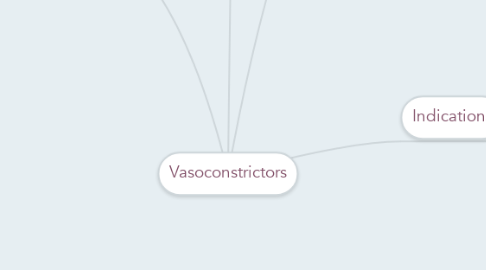
1. Precautions
1.1. Cardiovascular Disease
1.1.1. Vasoconstrictor agents should be used in local anesthesia solutions only when it is clear that the procedure will be shortened or the analgesia rendered more profound.
1.1.2. The minimum possible amount of vasoconstrictor should be used when it is indicated.
1.1.3. The ASA IV patients, should not receive invasive dental treatment until they have been stabilized.
1.2. Pregnancy
1.2.1. Dental procedures be deferred when a patient is pregnant.
1.2.1.1. When it is not possible, necessary treatment must be provided in an optimally safe manner for both mother and fetus
1.2.2. Most studies have shown that uterine and umbilical blood flow are not compromised by epinephrine.
1.2.2.1. A possible exception includes women whose pregnancies are complicated by hypertension.
1.3. Drug interactions
1.3.1. Tricyclic antidepressants
1.3.1.1. Contraindicated: epinephrine (because absorption) & Levonordefrin (cardiac disease).
1.3.2. Nonselective b-adrenergic antagonists
1.3.2.1. First of all the patient need to receive a minimal initial dose, be monitored for S.E. at 5 min. before additional drug is administered.
1.3.3. Certain general anesthetics
1.3.3.1. Halothane
1.3.3.1.1. Epineprhine: 2 micrograms/kg
1.3.3.2. Thiopental
1.3.3.2.1. Epinephrine: 1 microgram/kg
1.3.3.3. Cocaine
1.3.3.3.1. 24 hrs. after the last drug exposure
1.4. Sulfite intolerance
1.4.1. Local anesthetics with adrenergic vasoconstrictors are absolutely contraindicated in the rare patient with a true sulfite allergy.
1.4.1.1. Sulfites are used in local anesthetic solutions as antioxidants.
2. Mechanism of action
2.1. Epinephrin (5–20 mg/mL )
2.1.1. Simulate adrenergic receptors
2.1.1.1. Action: alpha and beta. The most commonly & highly effective.
2.2. levonordefrin (50 mg/mL)
2.2.1. Simulate adrenergic receptors
2.2.1.1. Relatively specific for the alpha 2 receptor.
2.3. Felypressin
2.3.1. Simulate V(a1) receptors
2.3.1.1. Relatively ineffective as a hemostatic agent. (It may cause coronary vasoconstriction in patients with heart disease).
3. Function
3.1. 1. Enhancement of local anesthesia in quality and duration. 2. Assist in hemostasis. 3. Increases local anesthetic safety.
4. Indications
4.1. Enhancement of local anesthesia
4.1.1. Lidocaine produces unreliable pulpal anesthesia without a vasoconstrictor
4.1.1.1. lidocaine + epinephrin: blocks pulpal nerve fibers for 60–90 minutes, depending on the site of injection.
4.1.2. Procaine is similarly ineffective for pulpal anesthesia without a vasoconstrictor.
4.1.3. Mepivacaine
4.1.3.1. Can be used without a vasoconstrictor for short procedures.
4.1.3.1.1. Even so, the addition of a vasoconstrictor increases its duration of anesthesia (20 - 40 min).
4.1.4. Prilocaine
4.1.4.1. Can be used without a vasoconstrictor for short procedures.
4.1.4.1.1. Even so, the addition of a vasoconstrictor increases its duration of anesthesia (20 - 50 min).
4.1.5. Bupivacaine
4.1.5.1. It is highly lipid-soluble
4.1.5.2. Long-acting local anesthetic
4.1.5.3. It is capable of providing protracted pulpal anesthesia without a vasoconstrictor. Even so, the addition of a vasoconstrictor increases its duration of anesthesia
4.2. Homeostasis
4.2.1. Infiltration of a local anesthetic containing epinephrine can help reduce blood loss during surgery and improve visualization of the operative field
4.2.2. lidocaine partially counteracts the vasoconstrictive effect of epinephrine and enhances its systemic absorption.
4.3. Safety
4.3.1. The addition of a vasoconstrictor can protect against systemic local anesthetic toxicity. (By decreasing blood flow in the injected tissues, a vasoconstrictor slows the rate at which the local anesthetic enters the circulation).
4.3.2. The addition of a vasoconstrictor makes a local anesthetic safer by retarding systemic absorption.
4.3.3. By retarding the absorption there is a diminished need for reinjection and less likelihood for drug accumulation.
